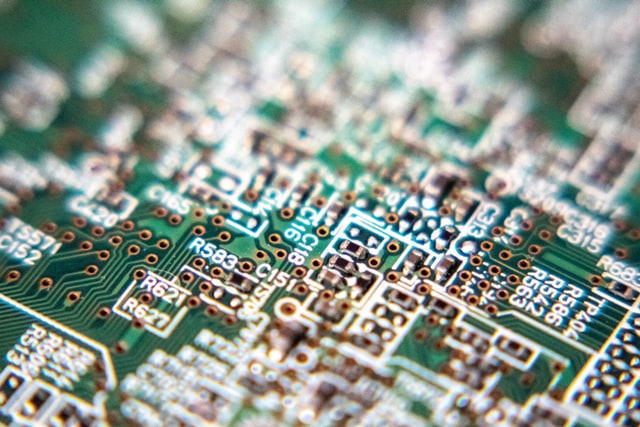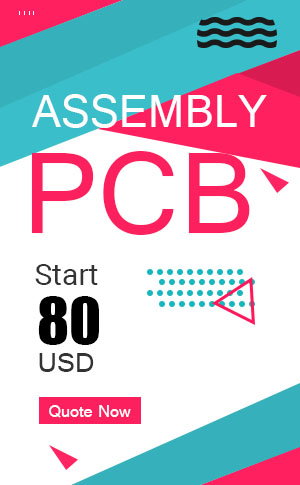General, quoting & support.
Add: Building E, No.58, Nanchang Road, Xixiang , Baoan District Shenzhen City, Guangdong, China
Tel : 0755-27348887
Fax : 0755-27349876
E-mail : svc@pcbastore.com
A 2021 Comprehensive Review of Polyimide PCB
Simon / 2021-04-01
Contents [hide]
Even though many manufacturers are still using the standard FR4 material for their boards, polyimide PCB is soon taking the market with a storm. As much as FR4 materials are cost-effective and practical for various applications, polyimide PCB materials are the latest game-changer in the software industry. With the firm conviction about daily technological advancement, conglomerates are shifting focus on PCB material properties as an alternative to traditional FR4 materials. Buckle up and learn more about polyimide PCB materials' properties and how they are likely to impact your applications.

What is Polyimide PCB Material?
To fully understand the meaning of polyimide PCB, we need to define the term polyimide correctly. Polyimide is a constituent of two words; "Poly", which refers to polymers and "mide", referring to progressive imide monomers. Joining these two terms together creates the broader polymer collection.
Polymers are usually formed either synthetically or naturally. In our scope, we will majorly focus on synthetically manufactured polyimides. Furthermore, the synthetic polyimides used in PCB production are sourced from various chemicals containing amide bonds. This process of manufacturing polyimides is known as polymerizing. The final product from polymerizing is then used in the production of PCB materials.
What is the Distinction Between PCB Materials and FR4 Materials?
When differentiating PCB materials from FR4 materials, you need to understand that FR4 does not refer to a specific type of material. Instead, FR4 is a substrate of PCBs, and it refers to a grade of material. Moreover, FR4 refers to flame-resistant constituted by National Electrical Manufacturers of (NEMA). Therefore, whenever you see FR4, it simply means the material has passed all the compliant tests according to the UL94V-0 standards.
Unlike polyimide PCB are constituents of synthetic polyimide, FR4 grade materials are produced from laminated fiberglass. Production of FR4 grade materials constitutes melting raw glass materials converting them to filaments of Fibre yarn. Manufactures then woven altogether, coated with an accoupling agent and resin to enhance its adhesion. Once the adhesion process is complete, the board is then coated with copper foil and the final product is used in the manufacture of PCB materials.
Notably, the epoxy glass resin and laminated copper used in the production of FR4 circuit boards make them rigid. This explains why PCB materials are more flexible than FR4. Polyimide PCB materials are also durable and lightweight compared to FR4. Whenever you compare the heat and chemical resistance between FR4 and polyimide PCBs, the latter is better off. However, polyimide PCB costs more than FR4s, although this cost results from their durability and widespread application. This then balances off the equation.
The Various Types of Polyimide PCBs
The types of polyimide PCBs are generated from examining various chemicals and additives used in the PCB manufacturing process. Also, classification is based on the material used during synthesizing of the amide polymer or polyimide. Here are the different types of Polyimide PCBs.
The Low-flow Polyimides
They are also referred to as rigid polyimide PCBs since they are manufactured with zero flexibility in their standard PCBs. However, low-flow polyimides stiffness is advantageous when the PCB circuits require rigidity, especially when subjected to adverse conditions. Hence, whenever the conventional adaptable PCBs fail, the low-flow polyimides provide the best alternative.
The Pure Polyimides
They are also referred to as the 2nd generation polyimides. They are straightforward PCBs and do not contain any additional features such as retardants or brominated flame. Moreover, since they lack flame retardants, pure polyimides are known to be stable and flexible. This feature makes them ideal for use on various communicating and electrical devices. Also, pure polyimides flexibility has earned it an A.K.A name: polyimide flex PCB.
Even though Polyimide PCBs have been in use since time immemorial, they also boast of widespread usage. They are widely preferred due to their extreme stamina against temperature changes. For this reason, pure polyimides are ranked high on the thermal stability table of various polyimides PCBs in adverse conditions.
The 3rd Generation Polyimides
They are best termed as the advanced version of the 2nd generation or pure polyimides. Similar to pure polyimides, the 3rd generation polyimides contain additives. These additives are the reason why 3rd generation polyimides are better flame resistant. Hence, 3rd generation polyimides are not prone to accidental electrical fires.
However, one demerit of the 3rd generation polyimides is that they do not have similar thermal stability exhibited in the pure ones. On the other hand, 3rd generation polyimides are easy to manufacture than all other polyimide PCBs. Also, the production cost of 3rd generation polyimides is low, thus allowing manufacturers to produce in bulk at a lower turnover time.
The Filled Polyimides
Filled polyimides are best categorized as multilayer PCBs. They contain several filler materials, which is a plus to the user since the extra fillers prevent resin from shrinking. Resin shrinkage is a threat to the longevity of the circuit boards. It makes the board frail and vulnerable to cracks when drilling or curing processes. Hence the extra fillers enhance the strength and durability of the circuit board.
The Benefits of Using Polyimide PCBs
The usage of polyimide PCBs is ideal if the printed circuit boards demand the characteristics mentioned in this section. Notably, most PCBs are used on special occasions; hence if you are not knowledgeable in this sector, ensure you consult a professional to guide you on the best fit polyimide to procure.
Thermal Stability
Most polyimide materials rank high on the thermal resilience and endurance table. They are known to work optimally even when subjected to extreme temperatures such as above 270 degrees Celsius. Moreover, the thermal conduciveness of polyimides PCB is ideal for protecting it from thermal damage during the manufacturing or repairing processes.
Durable
Polyimides are durable since they are resistant to different chemical reactions and temperature changes. Moreover, such endurance enhances its ability to withstand extreme physical stress. Thus, using polyimides for your circuits guarantees you service for a very long time.
Tensile Strength
Most users of PCBs have provided positive feedback on the circuit's excellent strength against deformation. Moreover, polyimide PCBs are lightweight and flexible, making them very tensile. The flexibility of polyimides makes them ideal for advanced PCB applications.
Flexible and Stable
Among the most significant benefits of using the polyimide, PCBs are guaranteed stability and flexibility. Moreover, combining these two features makes regular polymers the best option for most PCB applications compared to regular polyimides.
Resistant to Chemical Reactions
Most polyimides are resistant to various chemicals. For this reason, they undergo little or no corrosion when exposed to hostile chemical environments. Hence, this provides you with the leverage to operate your machine freely if exposed to chemicals.
The Versatile Applications of Polyimide PCBs
Various industries are currently using low-flexible and rigid polyimide PCBs in several applications. Some of the typical applications include.
The Manufacture of Automotive Electronics
Automotive electronics are the most vulnerable to adverse conditions. They are required to function optimally both in the summer and winter. For this reason, polyimide PCBs have been tested and proven suitable for use during the manufacture of automotive electronics. Polyimide PCBs are ideal since they offer durability, tensile strength and adapt quickly to any work setup.
The Medical Industry
Generally, most medical industry electronics have unique necessities compared to other industries. Moreover, polyimides are suitable for treatments and diagnosis processes, including implants, prosthetics, and advanced imaging, since they demand high and efficient applications. In this case, polyimide PCB laminate techniques provide a suitable option for such applications.
Furthermore, these medical electronics are operated in hostile environments, making them vulnerable to malfunctions. They also need to remain lightweight and free from signal interference. This makes polyimide PCB the only suitable option.
Military and Aerospace Electronics
The electronics used in the military and aerospace industries are also subjected to hostile conditions. These include explosions and space explorations. Even though Polyimide PCBs are not invisible, their durability and resistance to chemical and thermal conduction facilitate operation continuity in those hostile conditions. Moreover, PCBs tensile strength enhances the safety of the respective operators and the machine's other components.
The Manufacture of Consumer Electronics
Consumer electronics are critical and require massive safety measures before they are allowed into the market. Moreover, this category is electronic and tailored for various ages. Hence, such consumer-focused goods require circuit boards that are safe and durable for various human applications. This makes polyimide PCBs ideal for manufacturing consumer electronics.
The Manufacture of Computer Electronics
Recently most computer-manufacturing companies have switched to incorporate polyimide PCB materials on their computer electronics. Back in the memorial, cases of computers overheating, explosions or repeated breakdown were rampant. However, this has stopped with the introduction of PCB materials. Moreover, PCB materials are durable and resistant to thermal changes, making them ideal for computer electronics manufacture.
Conclusion
Finally, when sourcing for your polyimide PCBs ensure you procure from reputable vendors or straight from the manufacturer. One of the benefits of sourcing from a manufacturer is that they analyze your product needs, help you with the design work, and offer additional inputs to ensure you get a printed circuit board. However, do due diligence before transacting with any dealer.
Previous article:A 2021 Guide to the PCB Plating Techniques and Process







